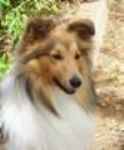Kelanmee Shetland Sheepdogs
Where quality and conformation is everything
The Shetland Sheepdog
Illustrated Standard
(AUSTRALIAN BREED STANDARD EXTENSION)
GENERAL APPEARANCE CHARACTERISTICS TEMPERAMENT HEAD AND SKULL MOUTH EYES
EARS NECK FOREQUARTERS BODY HINDQUARTERS FEET TAIL GAIT/MOVEMENT
COAT COLOUR HISTORY ACKNOWLEDGEMENTS
GAIT/MOVEMENT
Lithe, smooth and graceful with drive from hindquarters, covering the maximum amount of ground with the minimum of effort. Pacing, plaiting, rolling or stiff, stilted up and down movement highly undesirable.
 |
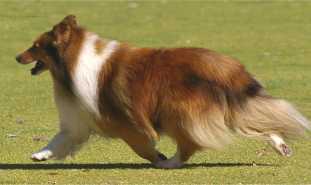 |
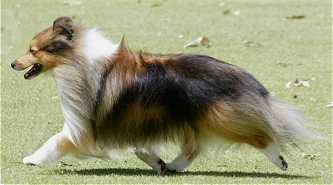 |
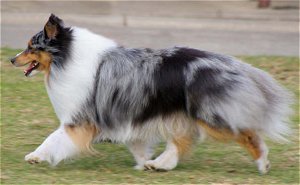 |
Most aspects of correct and faulty movement have already been covered under "forequarters" and "hindquarters" so it will already be understood that the required long, smooth, effortless stride which only just clears the ground ("daisy-cutting action") is dependent largely upon the construction, angulation and, above all, the balance of the fore-and rear-assembly.
If, for instance, the dog has a steep shoulder but well-angulated hindquarters, the forelegs will impede the potentially longer stride from behind. This may mean that the hindlegs may have to take evasive action in one of several different ways. Both hind feet may pass between the path of the forefeet causing the dog to move very close behind. Alternatively, the body may swing slightly sideways so that one hind foot may pass between and the other outside the track of the forefeet. If the forefeet are plaiting, the hind feet may need to pass outside the forefeet to one side, causing the body swing to be accentuated. Since the dog with steep shoulders may tend to raise the forefeet rather high in any event, this tendency will be exaggerated as it tries to remove the front feet as quickly as possible from the path of the rear feet. There are many variations on the theme of lack of balance between the forequarters and the hindquarters. All of them could result in ungainly and inefficient movement.
"Pacing" is, as often as not, a habit. It may be adopted by an obese or lazy dog or, more likely, as a result of faulty exercise on the lead. "Road work" is only useful if the dog can be kept at a brisk trotting pace over a considerable distance. ["pacing" occurs when the legs on the same side move in unison (instead of for example, front right leg, left back leg); this gives a rolling kind of movement.
Other movement faults can result from the handler’s bad habits! Dogs adapt themselves to the handler’s pace and no dog is likely to move with a long, smooth stride if its accompanying human is tripping along with a stiff, stilted up-and-down movement!
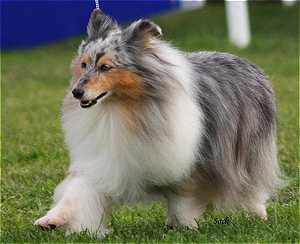 |
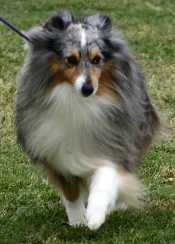 |
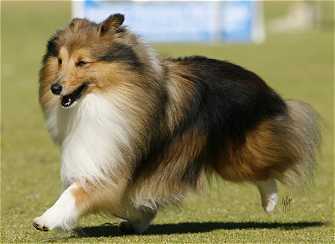 |
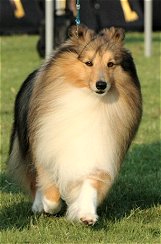 |
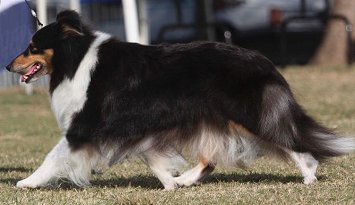 |
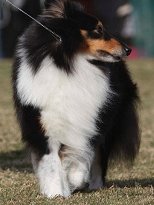 |
Finally it should be explained that although the fact is not mentioned in the Standard, the really well-made Sheltie, like most other breeds of perfectly natural construction, uses the gait known as single-tracking in order to achieve the desired balance and economy of movement. Although in stance and at a walk the dog’s legs remain perpendicular to the ground, as its speed increases, its legs begin to converge slightly until at a fast trot the inner edge of each foot would touch (but never cross) an imaginary central line.
Page 4
Contact Details
Kim at Kelanmee SheltiesSouthern Highlands, NSW, Australia
Email : [email protected]
